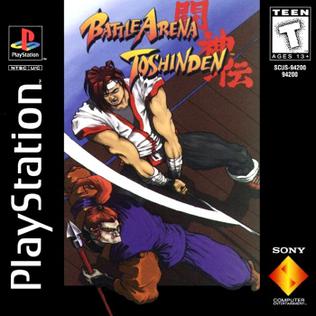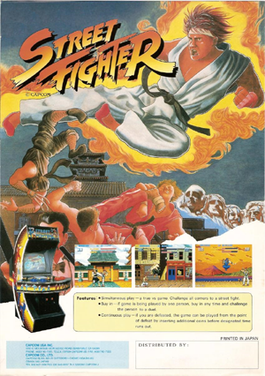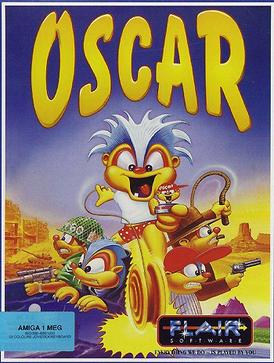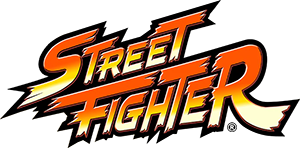Commander Keen is a series of side-scrolling platform video games developed primarily by id Software. The series consists of six main episodes, a "lost" episode, and a final game; all but the final game were released for MS-DOS in 1990 and 1991, while the 2001 Commander Keen was released for the Game Boy Color. The series follows the eponymous Commander Keen, the secret identity of the eight-year-old genius Billy Blaze, as he defends the Earth and the galaxy from alien threats with his homemade spaceship, rayguns, and pogo stick. The first three episodes were developed by Ideas from the Deep, the precursor to id, and published by Apogee Software as the shareware title Commander Keen in Invasion of the Vorticons; the "lost" episode 3.5 Commander Keen in Keen Dreams was developed by id and published as a retail title by Softdisk; episodes four and five were released by Apogee as the shareware Commander Keen in Goodbye, Galaxy; and the simultaneously developed episode six was published in retail by FormGen as Commander Keen in Aliens Ate My Babysitter. Ten years later, an homage and sequel to the series was developed by David A. Palmer Productions and published by Activision as Commander Keen. Another game was announced in 2019 as under development by ZeniMax Online Studios, but was not released.

Rise of the Robots is a fighting game released by Time Warner Interactive in 1994. Originally developed for the Amiga and DOS by Mirage's Instinct Design, it was ported to various video game consoles, including the Super NES, the Mega Drive, and the 3DO Interactive Multiplayer. The game includes a single-player mode in which the player assumes the role of the ECO35-2 Cyborg as he attempts to stop the Supervisor who takes over Electrocorp's facilities in Metropolis 4, and a two-player mode in which the second player controls a character chosen from among EC035-2's enemies.

Koei Co., Ltd. was a Japanese video game publisher, developer, and distributor founded in 1978. The company is known for its historical simulation games based on the novel Romance of the Three Kingdoms, as well as simulation games based on pseudo-historical events.

Balloon Fight is an action video game developed by Nintendo and HAL Laboratory and published by Nintendo. The original arcade version was released for the Nintendo VS. System internationally as Vs. Balloon Fight, while its Nintendo Entertainment System counterpart was released in Japan in 1985 and internationally in 1986.

Battle Arena Toshinden is a fighting video game developed by Tamsoft and published by Takara for the PlayStation. Originally released in 1995, it was released internationally by Sony Computer Entertainment, followed by 1996 ports for the Sega Saturn, Game Boy and MS-DOS. It was one of the first fighting games, after Virtua Fighter in 1993 on arcade and console, to boast polygonal characters in a 3D environment, and features a sidestep maneuver which is credited for taking the genre into "true 3D."

The Adventures of Captain Comic is a platform game written by Michael Denio for MS-DOS compatible operating systems and released as shareware in 1988. It was one of the first side-scrolling games for IBM PC compatibles reminiscent of games for the Nintendo Entertainment System, and it presaged a trend of shareware platform games in the early 1990s. A version for the NES was later published by Color Dreams as an unlicensed title.

The King of Fighters '99: Millennium Battle is a 1999 fighting game developed and published by SNK for the Neo Geo MVS arcade and home consoles in 1999. It is the sixth installment in The King of Fighters series, introducing a new story arc known as the "NESTS Chronicles" which is centered around a young man named K', who is formerly associated with a mysterious yet threatening organization known only as NESTS. The game introduces several changes to the established KOF format, most notably an assisting character labeled "Striker". The game was ported to the Neo Geo CD and the PlayStation. Dreamcast and Microsoft Windows versions were also released under the title The King of Fighters' 99: Evolution whose stages were remodeled in 3D.

Fatal Fury 2, known as Garō Densetsu 2: Aratanaru Tatakai in Japan, is a 1992 fighting video game released by SNK for the Neo Geo arcade and home platforms, and later ported to several other home systems. It is the sequel to Fatal Fury: King of Fighters (1991) and the second game in the Fatal Fury franchise. Its updated version, Fatal Fury Special, was released in 1993.

Fire Pro Wrestling is a professional wrestling video game series originating from Japan, started in 1989 by Human Entertainment, and currently developed and owned by Spike Chunsoft. The series is distinguished by its grappling system, which is primarily based on timed button presses and strategy. Another signature feature of the series is its Edit mode, a character creation feature with many options to customize appearances, wrestling moves and character artificial intelligence behavior.

Street Fighter is a 1987 arcade video game by Japanese developer and publisher Capcom. It is the first competitive fighting game produced by the company and the first installment in the Street Fighter series. It was a commercial success in arcades and introduced special attacks and some of the conventions made standard in later fighting games, such as the six-button controls and the use of command-based special moves.

Contra is a video game series produced by Konami composed primarily of run and gun-style shooting games. The series debuted in February 1987 with the Japanese coin-operated arcade game of the same name, which has since spawned several sequels produced for various platforms.

FX Fighter is an early realtime 3D fighting game for MS-DOS CD-ROM PC. It was developed by Argonaut Software and published by GTE Entertainment in June 1995. OEM versions have support for 3D acceleration, bundled with 3D graphics accelerator cards such as the Diamond Monster 3D.

Oscar is a platform game that was released on Amiga, Amiga CD32, and MS-DOS in 1993, and the Super Nintendo Entertainment System in 1996. It was developed and published by Flair Software. The CD32 version was bundled with the CD32 console on the same disc as the puzzle game Diggers. A Sega Genesis version planned but never released.

Martial Champion (マーシャルチャンピオン) is a 1993 fighting game released for the arcades by Konami. It was Konami's third fighting game after the 1985 releases Yie Ar Kung-Fu and Galactic Warriors and the 1986 release Yie Ar Kung-Fu II, and their first release that came after the success of Capcom's 1991 arcade hit Street Fighter II.

The Super A'can is a home video game console released exclusively in Taiwan and China in 1995 by Funtech/Dunhuang Technology. It is based around the Motorola 68000 microchip, which is also used in the Sega Genesis and Neo Geo. Twelve games have been confirmed to exist for the system.

Street Fighter is a Japanese media franchise centered on a series of fighting games developed and published by Capcom. The first game in the series was released in 1987, followed by six other main series games, various spin-offs and crossovers, and numerous appearances in other media. Its best-selling 1991 release Street Fighter II established many of the conventions of the one-on-one fighting genre.
The 1990s was the third decade in the industry's history. It was a decade of marked innovation in video gaming. It was a decade of transition from sprite-based graphics to full-fledged 3D graphics and it gave rise to several genres of video games including, but not limited to, the first-person shooter, real-time strategy, survival horror, and MMO. Arcade games, although still very popular in the early 1990s, began to decline as home consoles became more common. The fourth and fifth generation of video game consoles went on sale, including the Sega Genesis, Super Nintendo, Sega Saturn, PlayStation, Nintendo 64, and Game Boy Color. Notable games released in the 1990s included Super Mario World, Sonic the Hedgehog, Street Fighter II, Mortal Kombat, Killer Instinct, Tekken,Doom, Wolfenstein 3D, Quake, Duke Nukem 3D, Final Fantasy VII, Unreal Tournament, Star Fox, Half-Life, Grand Theft Auto, Super Mario 64, Pokémon Red and Blue, NBA Jam,Daytona USA, GoldenEye 007, System Shock 2, Civilization,Ridge Racer, Sonic Adventure, Gran Turismo, Super Mario Kart, Pokémon Gold and Silver,Castlevania: Symphony of the Night, Super Metroid, Silent Hill, The Legend of Zelda: Ocarina of Time, Crash Bandicoot, Spyro The Dragon, Fallout, Metal Gear Solid, Diablo, Virtua Fighter, Tomb Raider,Sega Rally Championship, Wing Commander,Super Smash Bros, Secret of Mana,Thief: The Dark Project, Age of Empires, Nights into Dreams, Panzer Dragoon, Gunstar Heroes, EverQuest, Chrono Trigger, Battletoads, Worms, Myst, Micro Machines, Streets of Rage 2,Baldur's Gate,Donkey Kong Country, Wipeout, The Legend of Zelda: A Link to the Past,Lemmings, EarthBound, StarCraft, Banjo-Kazooie, PaRappa the Rapper, Resident Evil, Tony Hawk's Pro Skater, Soulcalibur, Command & Conquer, and Dance Dance Revolution.

Dragon Knight 4 (ドラゴンナイト4) is an erotic role-playing video game developed by ELF Corporation and released only in Japan for several platforms between 1994 and 1997. In 1994, the game first became available for PC MS-DOS, NEC PC-9801 and X68000, with a censored version ported to the Super Nintendo Entertainment System in 1996 and later to the PC-FX, PlayStation and Sega Saturn in 1997. It was also adapted into illustrated novels and an anime miniseries.

Panda Entertainment, full name Panda Entertainment Technology Co., Ltd., was a video game developer from Taiwan that was active during the 1990s. They developed games for MS-DOS and for the Taiwanese only game console Super A'Can, made by Funtech. Their most famous game is Sango Fighter, and their highest selling game was Crazy Dodgeball. Some of their games became notorious for the usage of Adolf Hitler as a playable character, including the African Adventures series and Hilarious Bowling. In 2009 North American company Super Fighter Team acquired the full legal rights to some of the company's games, re-releasing Sango Fighter as freeware immediately afterward. In 2012, Super Fighter Team acquired the remainder of Panda's games.

















